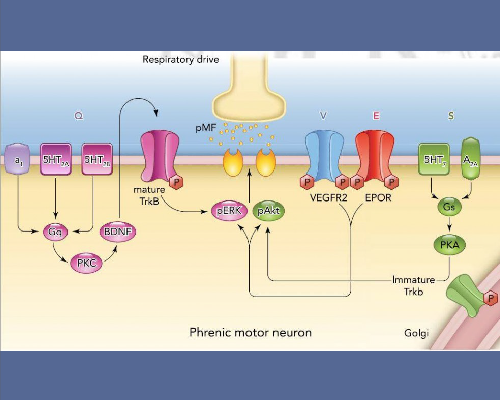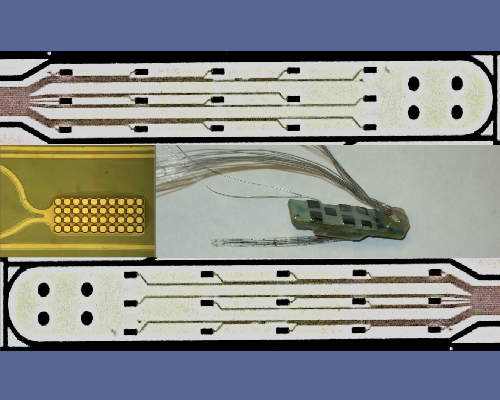Dr. Edgerton’s laboratory focuses on two main research questions:
1. How do the neural networks in the lumbar spinal cord of mammals, including humans, regain control of standing, stepping and voluntary control of fine movements after paralysis?
2. How can these motor functions be modified by imposing activity-dependent interventions after spinal cord injury?
These studies have shown that the mammalian spinal cord, without any input from the brain, can learn, forget, and relearn specific complex motor tasks such as standing and stepping.
We now have three effective ways to neuromodulate the spinal cord to improve and regain function:
1. Stimulation of the spinal circuitry using electrical current: Invasive and Non-Invasive
2. Administration of pharmacological agents
3. Repetitive training of motor tasks.
More recently we have applied these interventions and recovered full weight-bearing standing and stepping after complete paralysis (link to manuscript, video). We then translated these findings from animals to humans: we have reported that epidural stimulation alone can enable human subjects with complete paralysis for more than two years can regain the ability to stand independently and even regain significant levels of voluntary control of movement of the legs (link and/or picture and manuscript).
Finally, the different methods for neuromodulation of the spinal circuitry are also being tested with respect to their efficacy in improving function of the arms and hands, improved ventilatory function to regain mechanical ventilation dependents, recovering a more normal gait pattern after stroke and improve motor function in individuals with Parkinson’s Disease. We also are actively pursuing strategies directed toward restoring bladder function after spinal cord injury (link to manuscript, video).
CURRENT RESEARCH AREAS
Enable Standing and Stepping after Paralysis
Develop, test, and apply spinal cord epidural electrode arrays to facilitate standing and stepping in human subjects after a spinal cord injury: The major goal is to improve the technology necessary to investigate the combined effects of stand and step training with epidural stimulation of the spinal cord in human subjects who have a complete spinal cord injury.
Enable Hand Function after Paralysis
Enable forelimb function with agonist drugs and epidural and transcutaneous stimulation in human subjects after a spinal cord injury: The major goal is to apply four interventions concomitantly (transcutaneous stimulation, epidural stimulation, administration of pharmacological agents, and motor training) to control the excitability of localized neural circuits in humans with a cervical spinal cord injury and enable these individuals to regain use of their arms and hands.
Tools to assess functional recovery after paralysis
Develop therapeutic and diagnostic tools to assess and enable spared spinal motor function in human subjects after a spinal cord injury: The major goal is to develop a device for transcutaneous stimulation of the spinal cord that can be used as a non-invasive diagnostic assessment tool as well as a rehabilitation device for the recovery of motor function after a spinal cord injury. State-of-the-art electrophysiological technology is being developed to comprehensively define the functional properties of the neural networks in the awake functioning state.
Pharmacological regeneration across lesion after paralysis
Determine the plasticity and regeneration potential of the spinal cord after a spinal cord injury: The major goal is to determine if chondroitinase and/or epidural electrical stimulation administered to the spinal cord can facilitate the recovery of motor function after a cervical hemisection in non-human primates.
Regeneration of neural networks after with cell therapy
Activity-dependent functional regeneration after a spinal cord injury and transplantation of olfactory ensheathing glia: The major goal is to assess the effect of olfactory ensheathing glial transplantation in combination with step training, climb training, and epidural stimulation on enhancing axonal regeneration and sensorimotor recovery in complete spinal cord transected rats.
Changes in spinal cord anatomy responsible for recovery of function.
Determine the role of specific types of interneurons in the recovery of function after a spinal cord injury or other neuromotor dysfunction
The major goal is to identify the types and location of interneurons that play the role in integrating information from the brain and from the sensory information derived from muscles, tendons, and skin to generate well-coordinated movements after a severe spinal cord injury and other neuromotor dysfunctions.
Activity based muscle rehabilitation
We are continuing to perform experiments that will identify the specific types and amounts of activity needed to preserve normal properties of skeletal muscle, using state-of-the-art methods to stimulate muscles during normal daily activities as well as record the specific types of activities that a person perform on a routine daily basis.


